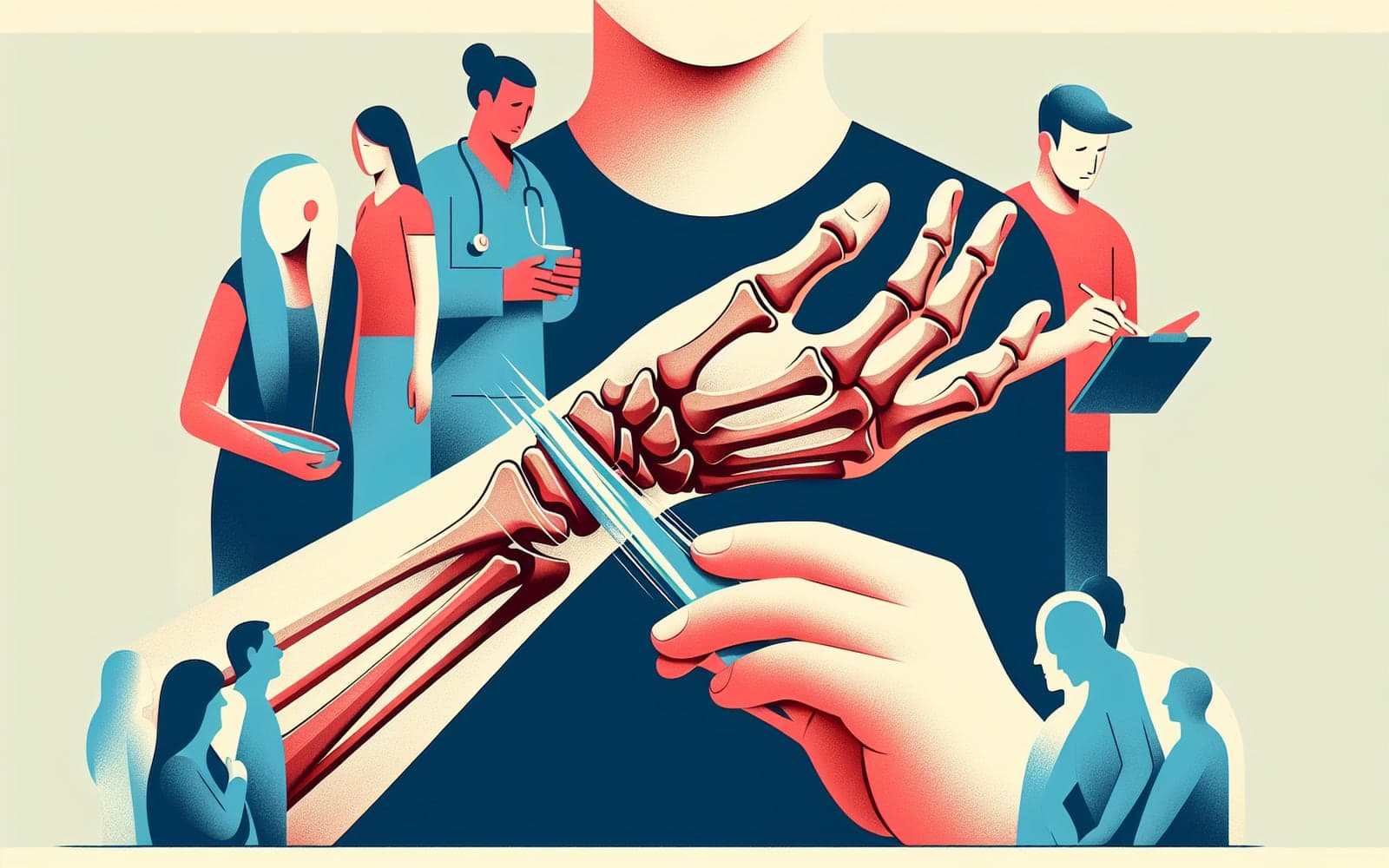Perilunate Dislocations: When Your Wrist Bones Go Rogue
Published: Dec 14, 2023

Medically reviewed by Alan Lucks | MD, Alan Lucks MDPC Private Practice - New York on December 14th, 2023.
Perilunate dislocations are serious wrist injuries that can have long-lasting consequences if not treated promptly. Understanding this condition is crucial for anyone involved in high-impact activities or sports.
Contents
What's a Perilunate Dislocation?
A perilunate dislocation occurs when the bones surrounding the lunate (a small, crescent-shaped bone in your wrist) lose their normal alignment. It's like a game of Jenga gone wrong - one misplaced piece can destabilize the entire structure.
How Does It Happen?
These injuries typically result from high-energy trauma, such as a fall from a height onto an outstretched hand. Imagine your wrist as a shock absorber - in a severe impact, the force can cause the bones to shift out of place.

Recognizing the Signs
Symptoms include severe wrist pain, swelling, and deformity. You may also experience numbness in your hand due to pressure on the median nerve. It's like having a dislocated shoulder, but in your wrist - the pain and loss of function are hard to ignore.
Frequently Asked Questions
They represent about 7% of all carpal injuries.
Most cases require surgical intervention for proper healing.
Full recovery can take several months to a year.
Some patients may experience chronic pain or reduced wrist function.
Key Takeaways
Perilunate dislocations are serious injuries that require prompt medical attention to prevent long-term complications and ensure the best possible outcome.
If you suspect a perilunate dislocation or any severe wrist injury, don't wait - consult with Doctronic immediately for expert guidance and swift action.Related Articles
References
Herzberg G, Comtet JJ, Linscheid RL, et al. Perilunate dislocations and fracture-dislocations: a multicenter study. J Hand Surg Am 1993; 18:768.
Mayfield JK, Johnson RP, Kilcoyne RK. Carpal dislocations: pathomechanics and progressive perilunar instability. J Hand Surg Am 1980; 5:226.
This article has been reviewed for accuracy by one of the licensed medical doctors working for Doctronic. Always discuss health information with your healthcare provider.

